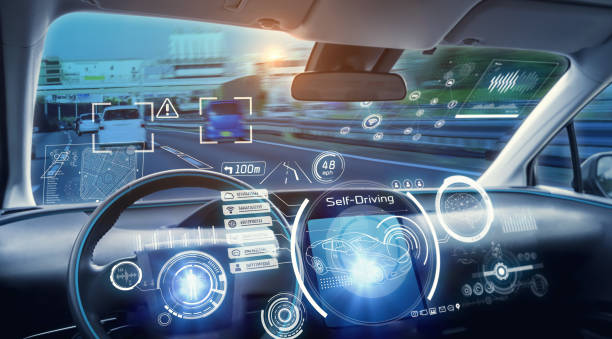Holographic Head-Up Displays: The Future of Automotive Visualization
The realm of automotive technology is on the cusp of a visual revolution. As cars become increasingly sophisticated, the way we interact with and consume information while driving is undergoing a dramatic transformation. Enter holographic head-up displays (HUDs), a cutting-edge technology poised to redefine the driving experience. This innovative system projects vital information directly into the driver's line of sight, creating a seamless blend of the physical and digital worlds. But how exactly does this technology work, and what impact will it have on the future of driving?

Holographic Technology: A Game-Changer
Holographic HUDs represent a quantum leap in display technology. Unlike their predecessors, these systems use advanced optics and light manipulation to create three-dimensional images that appear to float in space before the driver. This technology allows for a much larger display area and the ability to present complex information in an intuitive, easy-to-understand format.
How Holographic HUDs Work
At the heart of holographic HUD technology is a combination of lasers, mirrors, and holographic optical elements. High-intensity lasers project light onto a series of mirrors, which then reflect the light onto a transparent holographic film embedded in the windshield. This film acts as a diffraction grating, bending the light to create a virtual image that appears to hover in space beyond the windshield.
The Benefits of Holographic Displays
The advantages of holographic HUDs are numerous. By projecting information directly into the driver’s field of view, these systems drastically reduce the need for drivers to take their eyes off the road. This can significantly improve safety by minimizing distraction and allowing drivers to maintain situational awareness at all times.
Enhanced Navigation and Spatial Awareness
One of the most exciting applications of holographic HUDs is in navigation. Instead of relying on a small screen on the dashboard, drivers can see turn-by-turn directions overlaid onto the real world in front of them. This spatial contextualization makes it easier for drivers to understand and follow routes, reducing the cognitive load associated with traditional navigation systems.
Augmented Reality Integration
Holographic HUDs open the door to true augmented reality (AR) experiences in vehicles. By combining real-time sensor data with the holographic display, cars can highlight potential hazards, mark points of interest, or even display virtual objects that interact with the real world. This level of integration between the digital and physical realms has the potential to revolutionize how we perceive and interact with our environment while driving.
Challenges and Limitations
Despite their potential, holographic HUDs face several challenges. The technology is still in its infancy, and issues such as image brightness, visibility in different lighting conditions, and the need for precise calibration must be addressed. Additionally, the cost of implementing these systems is currently high, limiting their adoption to high-end vehicles.
The Road Ahead
As holographic HUD technology matures, we can expect to see wider adoption across the automotive industry. The potential applications extend far beyond simple information display. Future systems could incorporate gesture controls, eye-tracking technology, and even tactile feedback, creating a truly immersive and interactive driving experience.
Implications for Vehicle Design
The advent of holographic HUDs could have far-reaching implications for vehicle design. As more information is projected onto the windshield, traditional instrument clusters may become obsolete. This could lead to cleaner, more minimalist interior designs and potentially even changes to the overall structure of vehicle cabins.
Regulatory and Safety Considerations
As with any new automotive technology, holographic HUDs will need to navigate a complex regulatory landscape. Safety standards will need to be developed to ensure that these systems enhance, rather than hinder, driver safety. Questions about information overload and driver distraction will need to be carefully addressed.
The Human Factor
Perhaps the most crucial consideration in the development of holographic HUDs is the human factor. How much information is too much? How can we ensure that these systems enhance the driving experience without overwhelming or distracting drivers? These questions will be at the forefront as the technology evolves.
Conclusion
Holographic head-up displays represent a fascinating convergence of optics, computing, and automotive engineering. As this technology continues to develop, it has the potential to fundamentally change how we interact with our vehicles and the world around us while driving. While challenges remain, the future of automotive visualization looks bright, with holographic HUDs leading the way towards a more immersive, intuitive, and safe driving experience.





